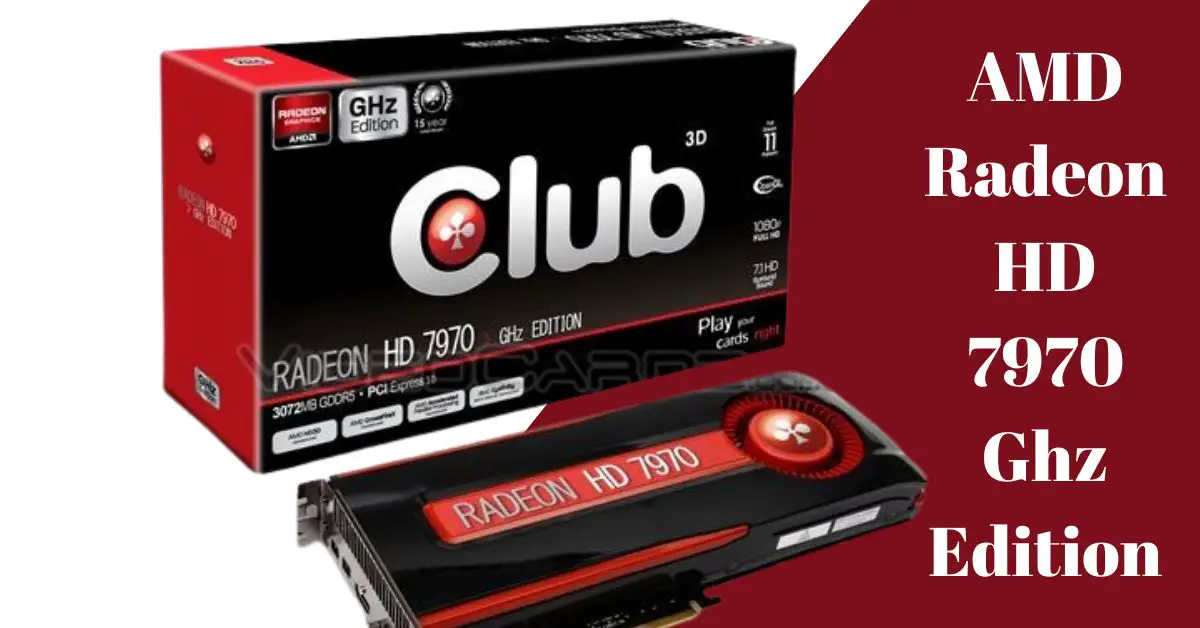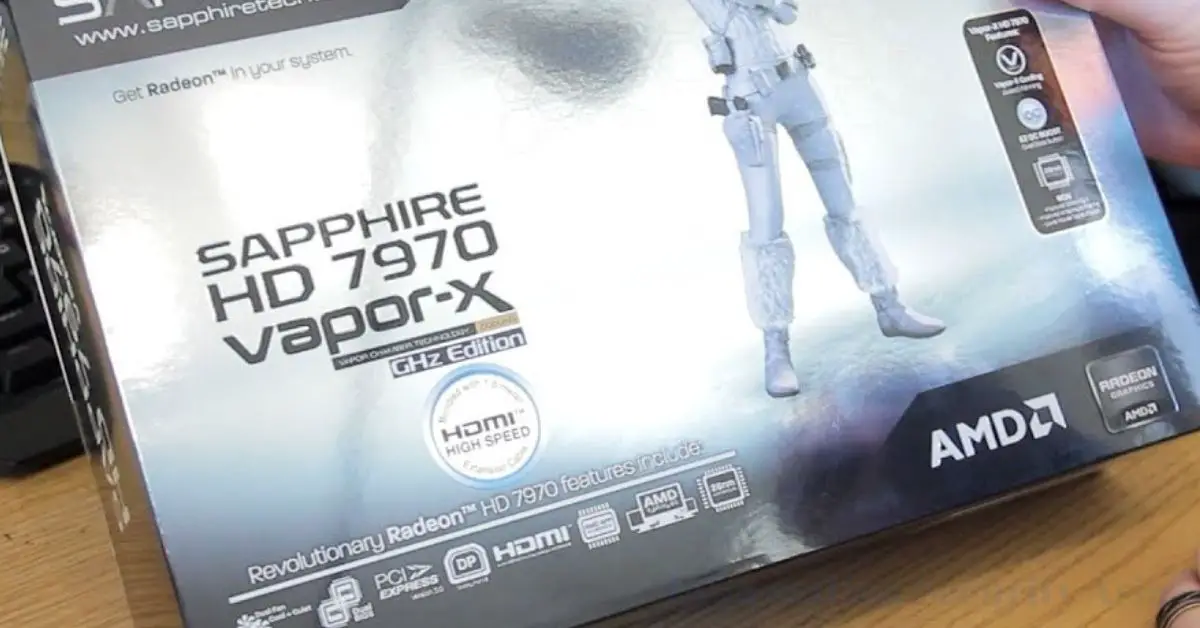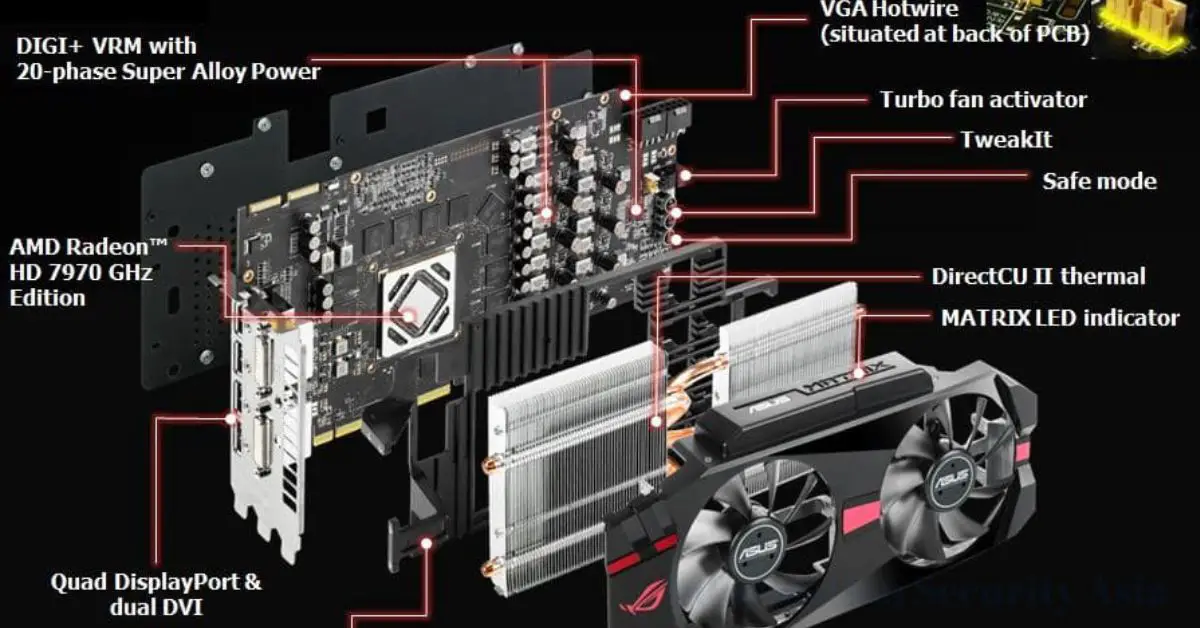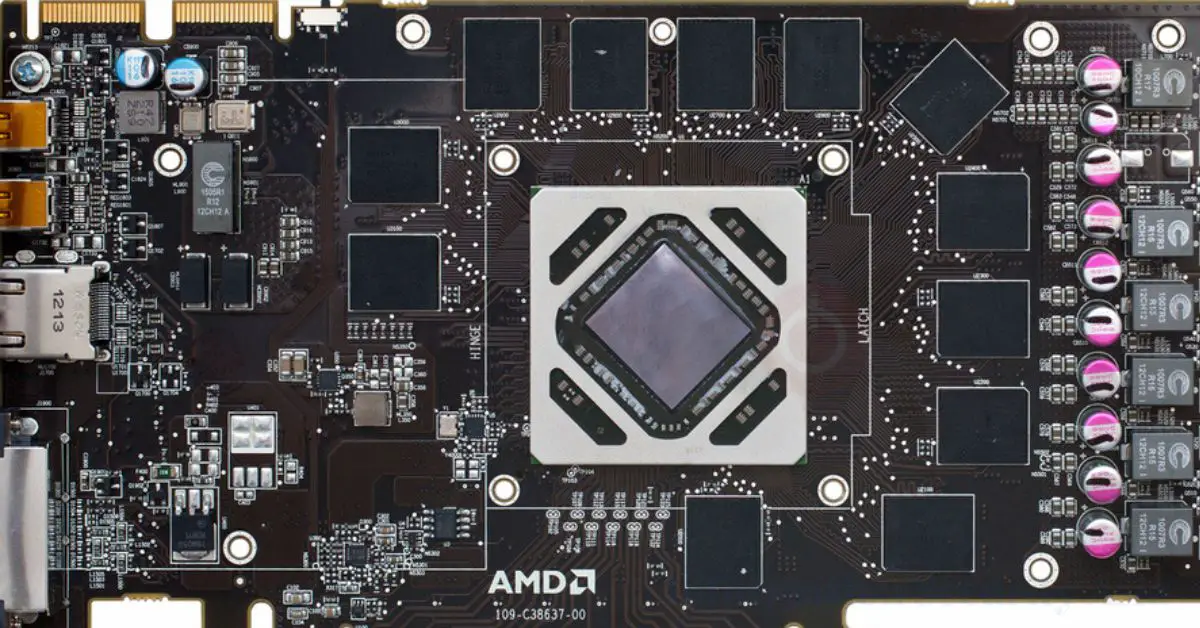The AMD Radeon HD 7970 GHz Edition was a high-end graphics card released in 2012 by AMD, catering to gamers and enthusiasts seeking top-tier performance. It was part of the Radeon HD 7000 series and was notable for its exceptional performance, advanced features, and innovative architecture.
Contents
- Overview of the GPU
- Technical Specifications of AMD Radeon HD 7970 GHz Edition
- AMD Radeon HD 7970 GHz Edition: Features and Capabilities
- AMD Radeon HD 7970 GHz Edition: Cooling and Power Consumption
- AMD Radeon HD 7970 GHz Edition: Evolution and Legacy Edition
- Pros and Cons of the AMD Radeon HD 7970 GHz Edition
- AMD Radeon HD 7970 GHz Edition: Use Cases and Applications
- AMD Radeon HD 7970 GHz Edition: Overclocking Potential and Customization Options
- Frequently Asked Questions
- 1. What is the release date of the AMD Radeon HD 7970 GHz Edition?
- 2. What are the key differences between the HD 7970 GHz Edition and its predecessor?
- 3. Can the HD 7970 GHz Edition support modern gaming titles at high settings?
- 4. How does the HD 7970 GHz Edition compare to NVIDIA’s equivalent GPUs in terms of performance?
- 5. Is the HD 7970 GHz Edition suitable for cryptocurrency mining?
- 6. Are there any common issues or drawbacks reported by users of the HD 7970 GHz Edition?
- 7. What are the recommended system requirements for using the HD 7970 GHz Edition?
- 8. Is it still worth buying the HD 7970 GHz Edition in today’s market?
- 9. How does the HD 7970 GHz Edition handle heat dissipation under heavy workloads?
- 10. Does the HD 7970 GHz Edition support multi-monitor setups effectively?
Overview of the GPU
The HD 7970 GHz Edition was based on the Graphics Core Next (GCN) architecture, which brought significant improvements in compute performance, power efficiency, and overall graphics rendering capabilities. It featured a cutting-edge design that aimed to deliver superior gaming experiences and high-performance computing tasks.
History and Evolution of the Radeon Series
The Radeon series from AMD has a rich history of pushing the boundaries of graphics technology. Over the years, Radeon GPUs have evolved in terms of performance, efficiency, and feature sets. The HD 7970 GHz Edition was a significant milestone, showcasing AMD’s dedication to delivering top-tier graphics performance to enthusiasts.
Significance of the HD 7970 GHz Edition in the Radeon Lineup
The HD 7970 GHz Edition held great significance in the Radeon lineup due to its performance prowess and technological advancements. It set new standards in performance and became a go-to choice for gamers and professionals looking for high-end graphics capabilities.
Technical Specifications of AMD Radeon HD 7970 GHz Edition
Architecture and GPU Details
- Architecture: Graphics Core Next (GCN)
- Stream Processors: 2048
- Compute Units: 32
- Texture Units: 128
- ROPs (Raster Operation Pipelines): 32
- Memory Interface: 384-bit
Memory and Bandwidth
- Memory Type: GDDR5
- Memory Size: 3GB
- Memory Clock: 1500 MHz
- Memory Bandwidth: 288 GB/s
Clock Speeds and Performance Metrics
- Base Clock: 1000 MHz
- Boost Clock: 1050 MHz
- Peak Compute Performance: Up to 4.3 TFLOPs (Floating Point Operations Per Second)
- Performance in Games: Capable of running most modern games at high settings at the time of its release.
The AMD Radeon HD 7970 GHz Edition was a groundbreaking graphics card known for its exceptional performance, innovative architecture, and contribution to pushing the boundaries of graphics technology within the Radeon lineup. Its advanced features and capabilities made it a popular choice among gamers and professionals seeking high-end GPU performance.
AMD Radeon HD 7970 GHz Edition: Features and Capabilities
Graphics Rendering Capabilities
- DirectX and OpenGL Support: The AMD Radeon HD 7970 GHz Edition supported the latest DirectX 11 and OpenGL 4.2 standards, allowing it to leverage the latest graphics technologies and APIs for enhanced rendering, improved visual effects, and better performance in games and applications.
- Resolution and Display Outputs: It was capable of driving high-resolution displays with support for resolutions up to 2560×1600 and even higher with multi-monitor setups. The card typically offered multiple display outputs including DisplayPort, HDMI, and DVI, enabling users to connect to various monitors and setups.
Gaming Performance
Benchmarks and Performance Comparisons
- Performance Benchmarks: The HD 7970 GHz Edition delivered impressive performance in benchmarks, showcasing its capabilities in various synthetic tests like 3DMark. It excelled in rendering complex scenes, achieving high frame rates and smooth gameplay in demanding titles of its time.
- Comparative Performance: In its era, the HD 7970 GHz Edition was compared favorably to its competitors, offering competitive performance against NVIDIA’s high-end GPUs of that time, such as the GTX 680. It was often praised for its raw performance and price-to-performance ratio.
Game Compatibility and Optimization
- Game Compatibility: The HD 7970 GHz Edition was compatible with a wide range of games, running both modern and older titles effectively. Its robust architecture and driver support ensured compatibility and smooth performance in many popular games of its era.
- Optimization and Drivers: AMD regularly released driver updates to optimize performance and improve compatibility with new game releases. These driver updates aimed to harness the GPU’s potential, ensuring gamers could enjoy enhanced performance and stability in their gaming experiences.
AMD Radeon HD 7970 GHz Edition: Cooling and Power Consumption
Thermal Design and Cooling Solutions
The AMD Radeon HD 7970 GHz Edition often came equipped with a robust cooling solution from various manufacturers. These solutions typically included large heatsinks, multiple heat pipes, and a fan or fans designed to efficiently dissipate heat generated by the GPU during operation. The cooling design aimed to maintain optimal temperatures, ensuring stability and longevity while minimizing noise levels under heavy loads.
Power Requirements and Efficiency
The HD 7970 GHz Edition had a TDP (Thermal Design Power) around 250 watts. It required a sufficient power supply unit with the necessary connectors (typically 6-pin and 8-pin PCIe connectors) to deliver the required power. While it consumed relatively more power compared to mid-range or lower-end GPUs, it offered substantial performance in return.
AMD Radeon HD 7970 GHz Edition: Evolution and Legacy Edition
Impact on the GPU Market
The HD 7970 GHz Edition made a significant impact on the GPU market upon its release. It was among the fastest single-GPU graphics cards available at that time, showcasing AMD’s prowess in GPU design. Its performance, coupled with competitive pricing, solidified AMD’s position in the high-end GPU market segment.
Successor Models and Upgrades
The HD 7970 GHz Edition was succeeded by subsequent iterations and series within AMD’s Radeon lineup, notably the R9 series (such as the R9 290X) and later the Radeon RX series (e.g., RX 480, RX 580). These successors continued to build upon the architecture and performance gains established by the HD 7970 GHz Edition, offering enhanced features, increased performance, and improved efficiency.
The legacy of the HD 7970 GHz Edition lies in its role as a pioneering high-end GPU that set performance standards and paved the way for subsequent graphics cards. Its architecture and capabilities influenced future AMD GPUs, contributing to the evolution of graphics technology over subsequent generations.
Pros and Cons of the AMD Radeon HD 7970 GHz Edition
Advantages
- High Gaming Performance: The HD 7970 GHz Edition offered excellent gaming performance, delivering high frame rates and smooth gameplay in demanding titles of its era.
- Advanced Graphics Capabilities: Its Graphics Core Next (GCN) architecture and 3GB of GDDR5 memory provided advanced graphical features and the ability to handle complex visual effects.
- Competitive Pricing: It provided a compelling price-to-performance ratio compared to its competitors, making it an attractive choice for gamers looking for high-end performance without breaking the bank.
- Overclocking Potential: The GPU had significant overclocking headroom, allowing enthusiasts to push its performance further beyond stock settings.
Limitations and Drawbacks
- High Power Consumption: The HD 7970 GHz Edition consumed relatively more power compared to some of its competitors, leading to higher heat output and increased power requirements.
- Potential Heat and Noise: Under heavy load, the card could generate substantial heat, which, if not adequately managed, might lead to higher noise levels from the cooling solution.
- Limited VRAM: While 3GB of GDDR5 was substantial during its release, newer games and applications demanded more VRAM for higher textures and resolutions, which could limit performance in some scenarios.
AMD Radeon HD 7970 GHz Edition: Use Cases and Applications
Gaming Applications
The AMD Radeon HD 7970 GHz Edition was particularly well-suited for gaming applications, including:
- High-End Gaming: It excelled in running modern games at high settings and resolutions, delivering smooth and immersive gaming experiences.
- Multi-Monitor Gaming: Its ability to handle multiple displays made it suitable for multi-monitor setups, providing expansive gaming experiences without compromising performance significantly.
Professional Workloads (e.g., Video Editing, Design)
For professional workloads like video editing, design, and content creation:
- Video Editing: The GPU’s capabilities could be harnessed for hardware acceleration in video editing tasks, aiding in faster rendering and processing times.
- Design and 3D Modeling: While primarily a gaming GPU, it could still handle professional design and 3D modeling tasks, albeit with some limitations compared to workstation-grade GPUs.
AMD Radeon HD 7970 GHz Edition: Overclocking Potential and Customization Options
Overclocking Capabilities
The AMD Radeon HD 7970 GHz Edition was renowned for its impressive overclocking potential. Its core clock and memory could be pushed beyond stock settings, allowing enthusiasts to extract additional performance.
Many users achieved significant performance boosts by overclocking the GPU, albeit with careful monitoring of temperatures and stability to avoid potential issues.
Custom Cooling and Modifications
Users often explored custom cooling solutions for the HD 7970 GHz Edition to improve thermal performance or reduce noise levels. Aftermarket cooling solutions, including custom heatsinks, water blocks, and improved fans, were available, providing enthusiasts with options to enhance cooling efficiency or customize the aesthetics of their GPU setups. Some users also performed modifications like voltage tweaks or custom BIOS flashes to achieve better overclocking results.
Comparisons with Competing GPUs
At the time of its release, the HD 7970 GHz Edition competed primarily against NVIDIA’s GTX 680. Both cards offered comparable performance, with the HD 7970 GHz Edition often slightly outperforming the GTX 680 in certain games or benchmarks while maintaining competitive pricing.
Pricing and Value Proposition
The pricing of the HD 7970 GHz Edition was one of its key selling points. It typically provided excellent value for its performance, offering a compelling alternative to its NVIDIA counterparts at a slightly more affordable price point. Its competitive pricing made it an attractive choice for gamers seeking high-end performance without paying a premium.
The AMD Radeon HD 7970 GHz Edition showcased significant overclocking potential, allowing users to push its performance beyond stock settings. Custom cooling solutions and modifications were available for enthusiasts looking to improve cooling efficiency or personalize their GPU setups.
In direct comparison with contemporary NVIDIA graphics cards like the GTX 680, the HD 7970 GHz Edition often provided similar or slightly better performance at a more competitive price point, making it a favorable option for those seeking a balance between performance and value.
Frequently Asked Questions
1. What is the release date of the AMD Radeon HD 7970 GHz Edition?
The AMD Radeon HD 7970 GHz Edition was released in June 2012.
2. What are the key differences between the HD 7970 GHz Edition and its predecessor?
Compared to its predecessor, the HD 7970 GHz Edition had higher clock speeds, improved power management, and optimizations that allowed it to deliver higher performance.
3. Can the HD 7970 GHz Edition support modern gaming titles at high settings?
Yes, the HD 7970 GHz Edition was capable of running many modern gaming titles at high settings, although its performance might not match the demands of the most recent and graphically demanding titles at ultra settings.
4. How does the HD 7970 GHz Edition compare to NVIDIA’s equivalent GPUs in terms of performance?
It competed primarily against NVIDIA’s GTX 680 at its release, offering comparable performance. It sometimes outperformed the GTX 680 in certain games or benchmarks while providing a competitive price-to-performance ratio.
5. Is the HD 7970 GHz Edition suitable for cryptocurrency mining?
The HD 7970 GHz Edition was relatively popular for cryptocurrency mining due to its decent hashing power at the time. However, with the evolution of mining algorithms and newer, more efficient mining-specific hardware, its efficiency for mining may not be as competitive today.
6. Are there any common issues or drawbacks reported by users of the HD 7970 GHz Edition?
Some users reported issues related to higher power consumption, potential heat generation, and noise levels under heavy loads. However, these issues were manageable with proper cooling and setup configurations.
7. What are the recommended system requirements for using the HD 7970 GHz Edition?
Recommended system requirements typically included a sufficient power supply unit with the necessary connectors, a compatible motherboard with PCIe slots, and a system with appropriate cooling solutions to handle the GPU’s thermal output.
8. Is it still worth buying the HD 7970 GHz Edition in today’s market?
As of my last knowledge update in January 2022, the HD 7970 GHz Edition might not offer the best value for current gaming needs due to its age and newer, more efficient GPUs available on the market. However, it could still be a viable budget option for certain users or as a secondary GPU for non-intensive tasks.
9. How does the HD 7970 GHz Edition handle heat dissipation under heavy workloads?
The HD 7970 GHz Edition could generate significant heat under heavy workloads. Proper airflow and adequate cooling solutions were necessary to manage temperatures effectively.
10. Does the HD 7970 GHz Edition support multi-monitor setups effectively?
Yes, the HD 7970 GHz Edition supported multi-monitor setups well, offering multiple display outputs and the ability to drive high-resolution displays across multiple monitors for immersive gaming or productivity setups.
The AMD Radeon HD 7970 GHz Edition stands as a pivotal GPU in the Radeon lineup, showcasing remarkable performance and contributions to gaming and professional applications. Despite its age, its impact continues to resonate within the GPU market, leaving a legacy that remains noteworthy even in the face of newer technology.

Information Security Asia is the go-to website for the latest cybersecurity and tech news in various sectors. Our expert writers provide insights and analysis that you can trust, so you can stay ahead of the curve and protect your business. Whether you are a small business, an enterprise or even a government agency, we have the latest updates and advice for all aspects of cybersecurity.





